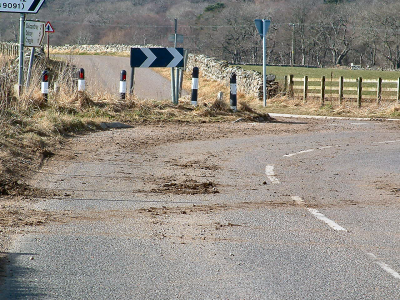 Keeping your commentary simple...
Keeping your commentary simple...
Plain, simple language is best for a commentary.
Use your own words and phrases (as you would in normal conversation). Avoid trying to copy someone else's commentary style, you will only 'trip up'.
Words of one or two syllables will often be adequate to get the message across. Speak in a positive, lively way. Avoid using a monotone voice, muttering or whispering.
Some people are very self-conscious when first giving a commentary - this is why it's perhaps best to go out and practice alone. One of our students found that the key was to 'sing' the commentary to start with - as with all learning there is no right or wrong way, just your way!
What's happening ahead?
A major pitfall when first learning to give a commentary is a tendency to be 'historic'; that is, to talk about what has just happened rather that what is happening or about to happen. Remember, the key to expert driving, and teaching is forward planning.
An example of a poor 'historic' commentary
"OOPS! I've just slid sideways on some cow muck, the wall is coming up fast. OOOH! I went through the wall backwards.
The farmer jumped out of the way. I just managed to miss that tree. I hope the breakdown truck doesn't get stuck in this field."
This commentary would score one point for "the wall is coming up fast" but the rest is retrospective talking about what has happened rather than about what's coming up.
A better commentary
"I can see some cow muck on the road ahead and I am planning to lose control of the car.
There is an opportunity to slide sideways and go through the wall backwards, so I'm braking hard to make the car spin. I will now sound my horn to warn the farmer of my presence. Steering left to avoid the Evergreen Oak ahead.
Planning to stop somewhere in the ploughed bit."
At least this driver knew what was happening!
(Perhaps) The best commentary
"Buildings ahead on the horizon, may be a farm.
Easing off the gas slightly to read the road sign ahead. Cattle crossing sign so there might be mud on the road.
I can clearly see the farm so I'm selecting a lower gear for the hazard. Mud on the road ahead so I'm slowing down.
I can see a dry road ahead and am starting to accelerate gently. Holding my low gear until my tyres are clean.
Good grip is now enabling me to accelerate up to the speed limit safely."
None of the commentaries above are perfect, however, the third example you should help you to understand what is meant by 'forward planning'.
The skill of reading the road and forward planning are covered in detail later in this course.
Next: Step 6 - The benefits of commentary driving...